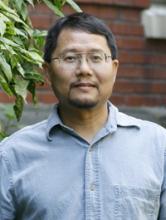
Dr. Chun Y. Seow
ProfessorAbout
Dr. Seow received his BSc degree in Mechanical Engineering and PhD degree in Physiology from the University of Manitoba. He received his post-doctoral training in muscle mechanics at the University of Chicago. In 1996 he was recruited to UBC as a CIHR New Investigator (1996-2001) and CIHR/BC Lung Investigator (2001-2006). His research projects have been continuously funded by CIHR since 1996 without interruption. His research has also been supported by NSERC for the last 15 years. He is member of the American Physiological Society, the Biophysical Society, the American Society of Mechanical Engineers, and Fellow of the American Thoracic Society.
Education & Training
- BSc, Mechanical Engineering, University of Manitoba (1984)
- PhD, Physiology, University of Manitoba
Area of Interest
Dr. Seow’s current research program has two major foci, one on understanding the basic mechanism of contraction in smooth muscle, with an emphasis on airway smooth muscle function and dysfunction associated with asthma; the other one is on understanding isolated lung function in terms of lung mechanics and pharmacology.
For smooth muscle research the Seow lab employed 3 major approaches:
1) Relating changes in cell mechanics to intracellular ultrastructural changes such as myosin and actin filament polymerization to determine the structure-function relationship.
2) Relating changes in mechanical function to pharmacological interventions that perturb the network of signalling associated with smooth muscle activation and adaptation, in order to reveal drug targets for regulating smooth muscle contraction.
3) Relating changes in mechanical properties to chemical interventions that alters protein expression and phosphorylation of enzymes and structural proteins, in order to understand the mechanism of contraction and its regulation.
A sophisticated ventilation chamber (plethysmograph) for isolated sheep and human lungs has been developed in the Seow lab recently to assess lung functional change (lung and airway resistance and elastance) in response to mechanical or pharmacological challenges. The setup allows positive or negative pressure ventilation at multiple tidal frequencies and volumes while the structural changes within the lung are recorded by a CT scanner. It also allows assessment of impact of changes in airway smooth muscle on the whole lung function and enables a“molecule-to-organ” type of approach.
Team Members
- Dr. Lu Wang, Research Associate
- Dr. Pasquale Chitano, Research Associate
- Dr. Shoujin Don, Post-doctoral Fellow
